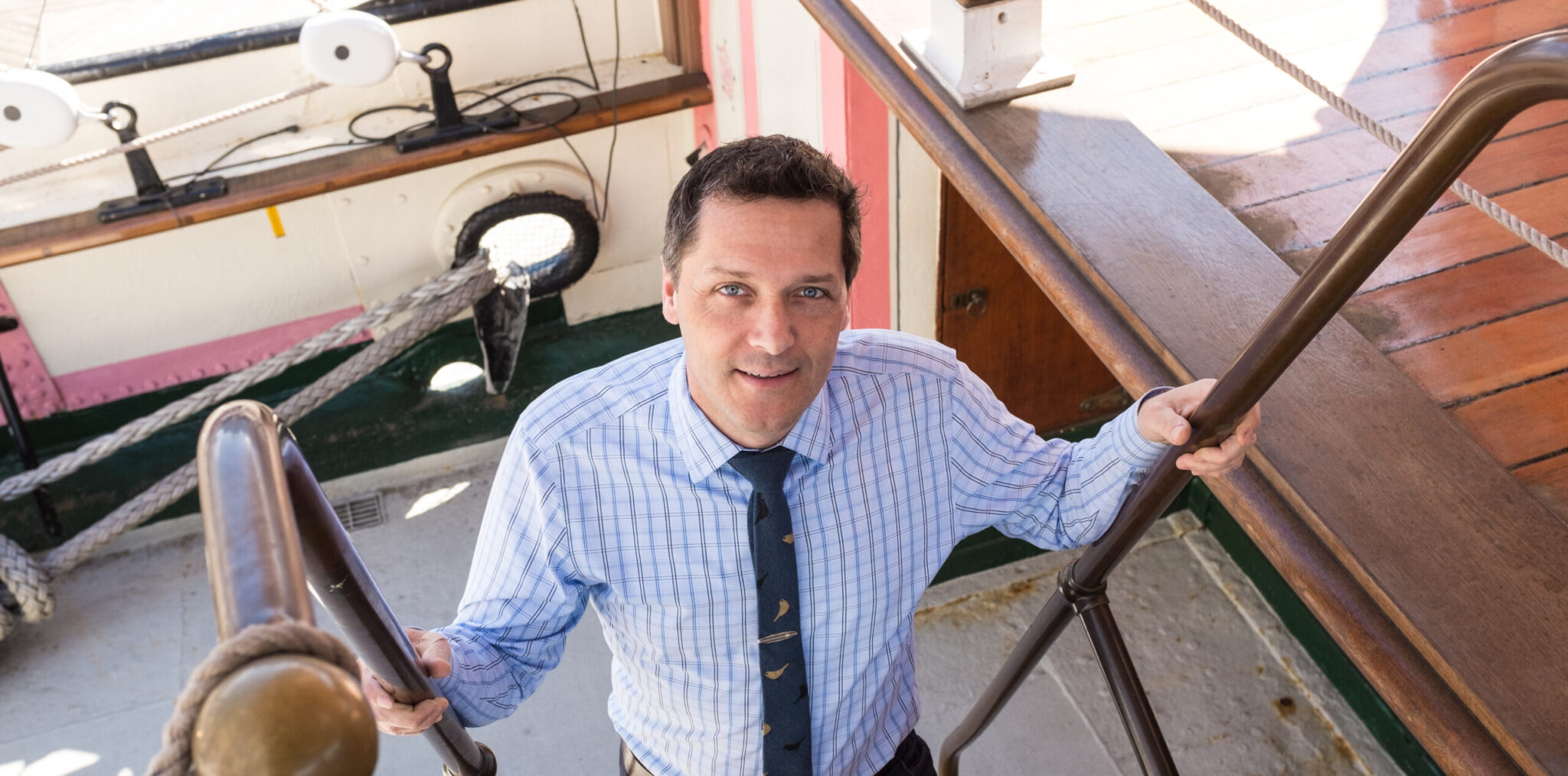I like to imagine Fulton and South Streets in 1812, when Peter Schermerhorn completed the twelve buildings that comprise Schermerhorn Row, when people came from all over New York to marvel at this row of Federal-style warehouses on the East River. In those days the piers were crowded with ships from all over the world discharging their cargoes of coffee, tea, cotton, molasses, and countless other trade goods upon the piers of South Street. The trade represented by these ships and the counting-houses, hotels, and warehouses of the South Street Seaport is the very trade that built the growing New York City and through it the United States of America.
In the late 1960s, visionary preservationists set aside a collection of entire city blocks in the South Street Seaport district as an area worthy of care and attention. These blocks of early- to mid-nineteenth century buildings, coupled with a series of piers crowded with historic ships, would tell the vital story of the formation and growth of New York, a city built on—and because of—its deep natural harbor and its connection through the Erie Canal to the inner states and territories of the new nation.
Today, more than two hundred years after Schermerhorn Row was completed, New York is a very different place. The Row is no longer the largest building in the city; it is dwarfed by the surrounding financial district. The piers are no longer crowded with ships, but that same deep-water harbor is seeing a renaissance of education, of commercial and ferry service, of oyster aquaculture, and of attention from New Yorkers.
Indeed, now more than ever the story of the formation of New York—the story of a city built on its waterways—is critical to our city. This is not a dry history, but a living tale of growth, of sacrifice, and of opportunity. The story and its reverberations play out in the education programs aboard our schooner Pioneer and tugboat W.O. Decker. They are carried in the hearts of the scores of volunteers who work regularly and without pay to preserve our mighty square-rigger Wavertree. They burn brightly in the lamps of the lightship Ambrose.
Although Hurricane Sandy is behind us, the challenges we face are still daunting. However, the very same spirit that led Schermerhorn and others to build, to grow, and to prosper in early New York will once again carry the day. For here we have a Museum, not of artifacts and buildings and ships, though we have those. Not of interpretive signs, galleries, and stories, though those abound as well. Here we have a museum of the people. A museum that thrives as the beating heart of the historic South Street Seaport district.
Welcome to South Street Seaport Museum. Our dedicated staff and volunteers (who are educators, sailors, preservationists, and some of the finest humans on the planet) are ready to welcome you aboard our ships and into our galleries and shops. We work together toward the next successful chapter of our “little museum that could.” Please join us for a visit, join as a member, and join the ranks of the proud volunteers who take a firsthand role in the preservation of old New York and the building of new New York.
I look forward to seeing you soon at South Street.

Captain Jonathan Boulware
President & CEO

